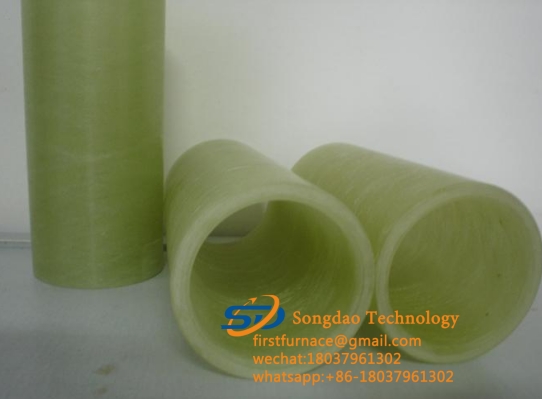- 08
- Feb
Technologia produkcji oraz rozwój i zastosowanie rur z włókna szklanego
Technologia produkcji oraz rozwój i zastosowanie rur z włókna szklanego
Istnieją trzy główne typy rura z włókna szklanego; production processes: reciprocating filament winding process, continuous filament winding process and centrifugal casting process.
Proces nawijania włókien posuwisto-zwrotnych (należy do metody stałej długości): W tym procesie zbiornik zanurzeniowy porusza się posuwisto z obracającym się trzpieniem, a długie włókna szklane są umieszczane pod pewnym kątem skośnym w stosunku do osi trzpienia i kąta pomocniczego (tj. Kąt nawijania) jest kontrolowany przez stosunek prędkości ruchu zbiornika do zanurzania do prędkości obrotowej trzpienia, a ruch translacyjny zbiornika do zanurzania jest kontrolowany przez skomputeryzowane sterowanie elektromechaniczne. Ilość warstw uzwojenia jest stopniowo zwiększana aż do osiągnięcia projektowanej grubości ścianki. Po zakończeniu nawijania żywica w wyrobie jest zasadniczo utwardzona. Po utwardzeniu trzpień jest usuwany z rury z włókna szklanego.
Continuous filament winding process (belonging to continuous method): The process is that the tube passes through a feeding station that supplies resin pre-impregnated roving, chopped glass fiber reinforced plastic fiber and resin sand mixture in motion, and the tube is continuously advancing in the core mold. made in.
Centrifugal casting process (belonging to the fixed-length method): In this process, the cut glass fiber reinforced material and sand are fed into a steel mold fixed on the bearing, and the unsaturated resin with catalyst is injected into one end of the steel mold to make the steel mold. It impregnates the reinforcing material. Under the action of centrifugal force, the resin replaces the air in the fibers and fillers, thereby producing a dense composite material without pores. Due to the action of centrifugal force, the inner wall of the tube forms a smooth and clean resin-rich inner surface layer. Cures at higher temperatures. The pipe made by this method is also called glass fiber reinforced plastic sand pipe.

